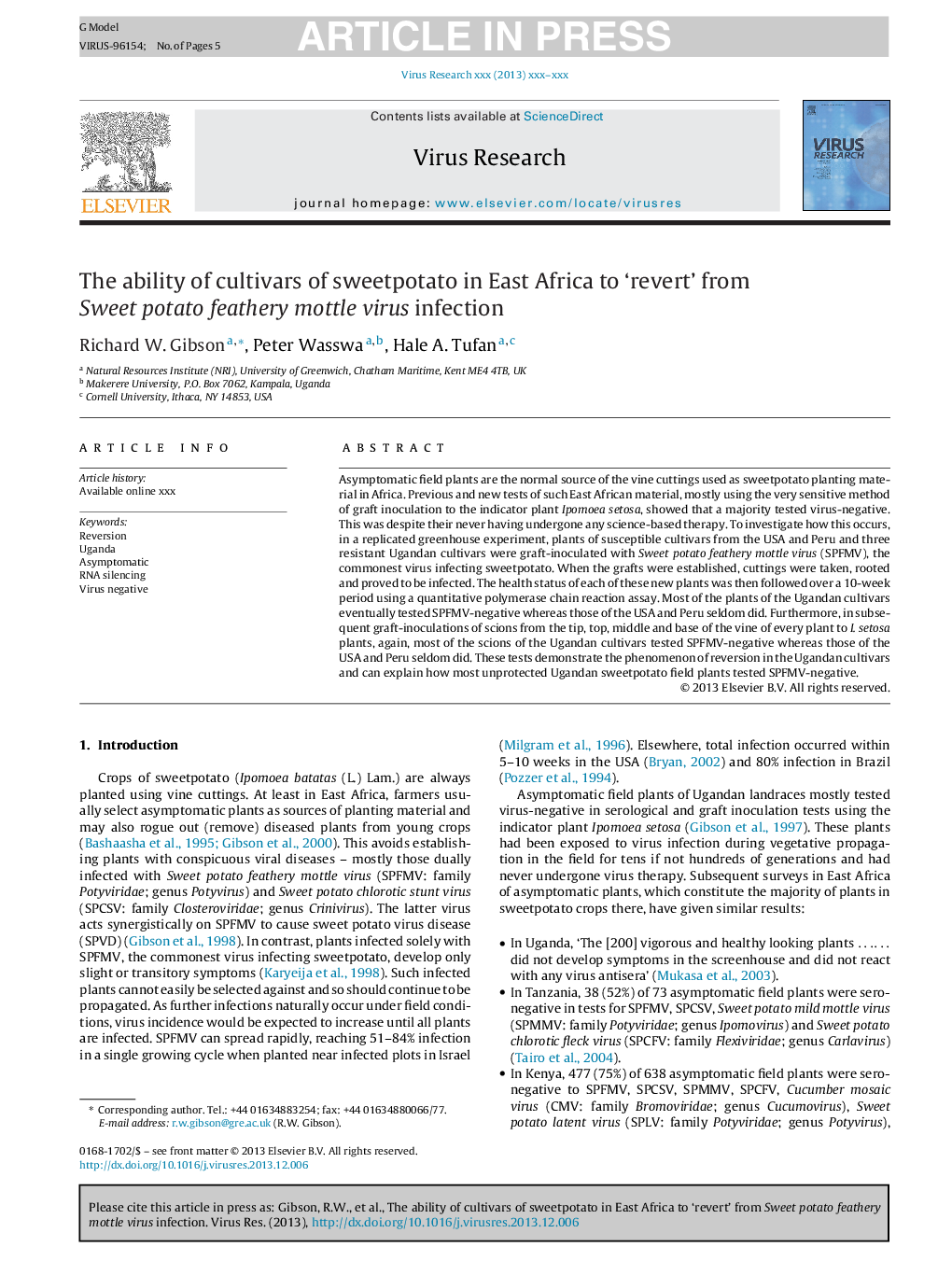| Article ID | Journal | Published Year | Pages | File Type |
|---|---|---|---|---|
| 6142443 | Virus Research | 2014 | 5 Pages |
Abstract
Asymptomatic field plants are the normal source of the vine cuttings used as sweetpotato planting material in Africa. Previous and new tests of such East African material, mostly using the very sensitive method of graft inoculation to the indicator plant Ipomoea setosa, showed that a majority tested virus-negative. This was despite their never having undergone any science-based therapy. To investigate how this occurs, in a replicated greenhouse experiment, plants of susceptible cultivars from the USA and Peru and three resistant Ugandan cultivars were graft-inoculated with Sweet potato feathery mottle virus (SPFMV), the commonest virus infecting sweetpotato. When the grafts were established, cuttings were taken, rooted and proved to be infected. The health status of each of these new plants was then followed over a 10-week period using a quantitative polymerase chain reaction assay. Most of the plants of the Ugandan cultivars eventually tested SPFMV-negative whereas those of the USA and Peru seldom did. Furthermore, in subsequent graft-inoculations of scions from the tip, top, middle and base of the vine of every plant to I. setosa plants, again, most of the scions of the Ugandan cultivars tested SPFMV-negative whereas those of the USA and Peru seldom did. These tests demonstrate the phenomenon of reversion in the Ugandan cultivars and can explain how most unprotected Ugandan sweetpotato field plants tested SPFMV-negative.
Related Topics
Life Sciences
Immunology and Microbiology
Virology
Authors
Richard W. Gibson, Peter Wasswa, Hale A. Tufan,
